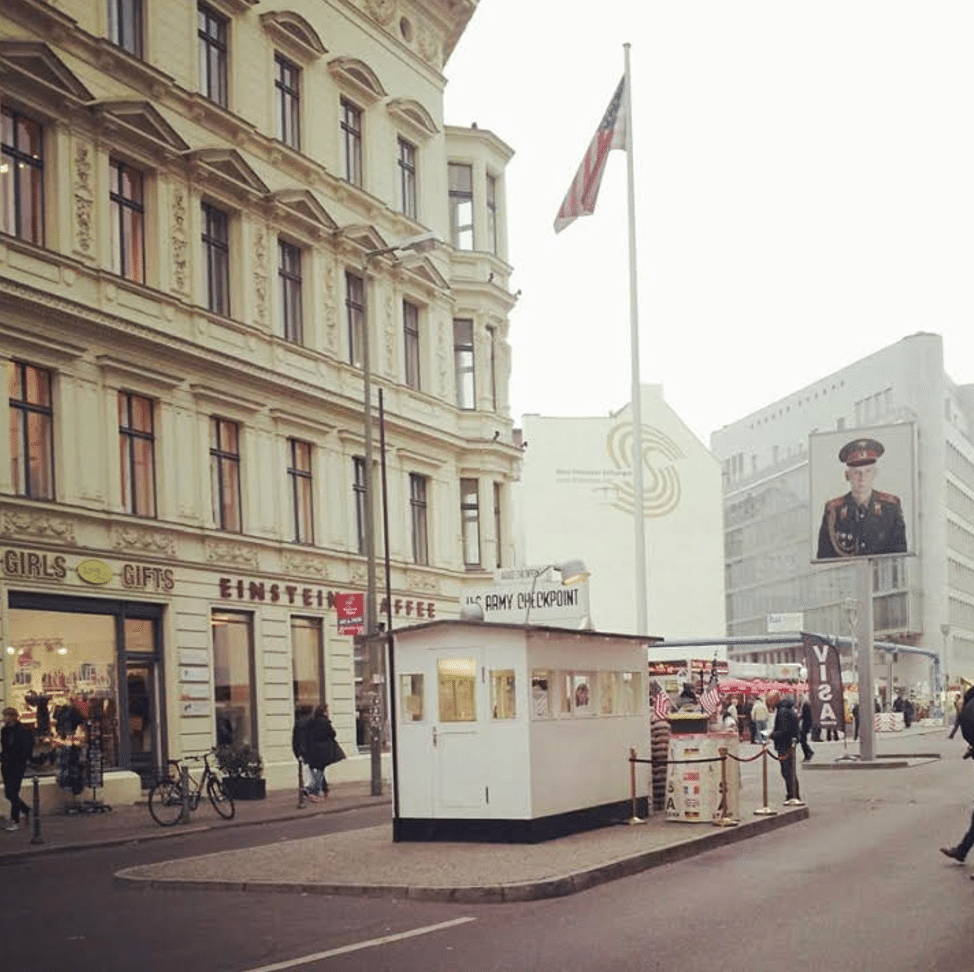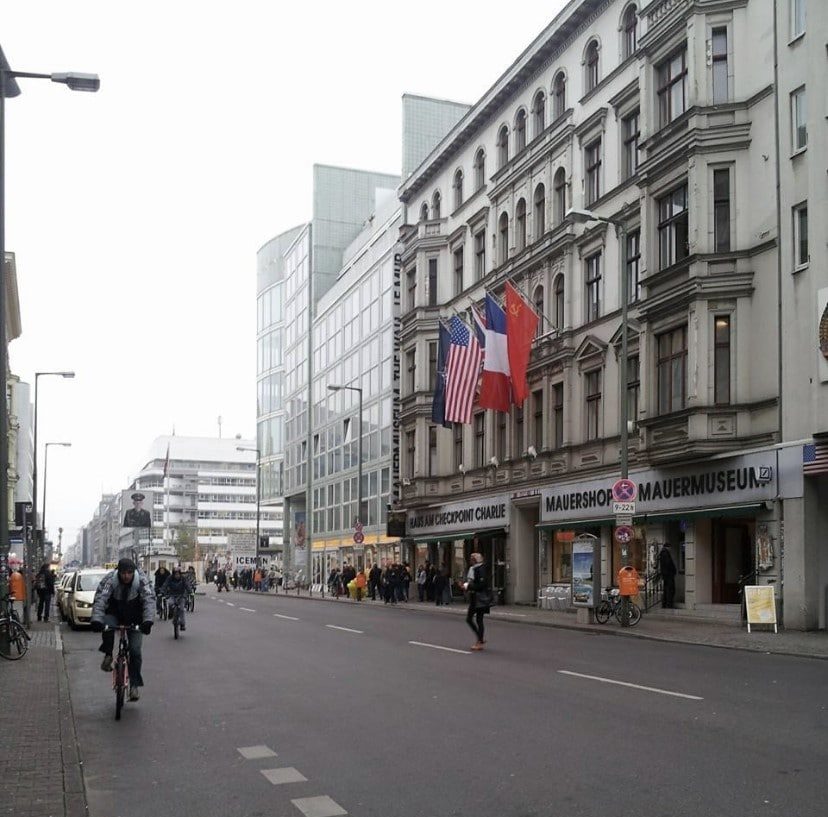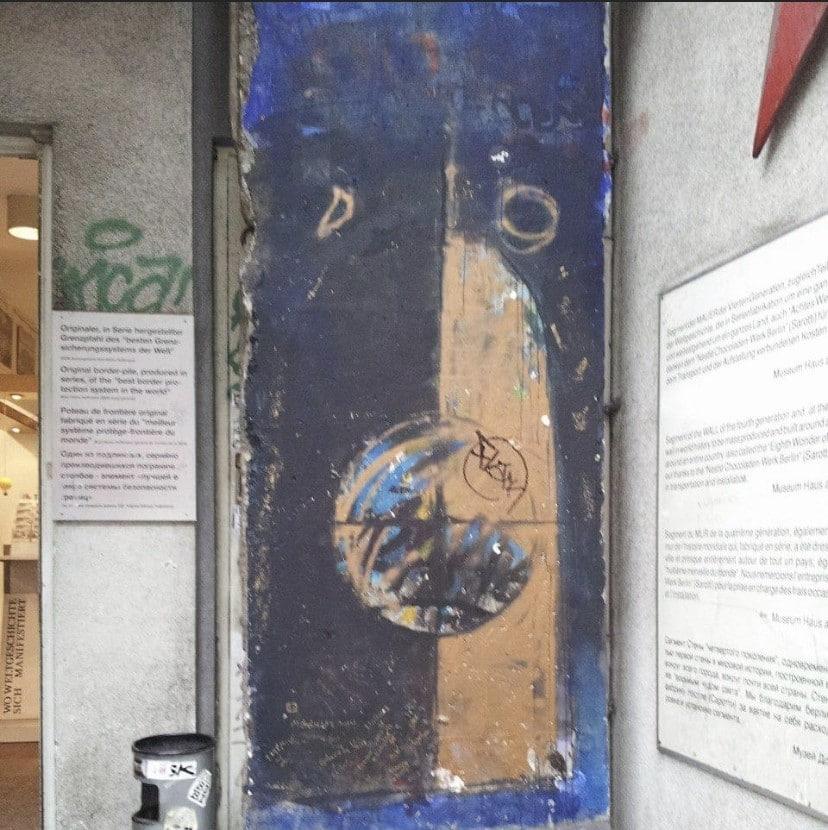Ronald Reagan’s iconic words at the Brandenburg Gate in 19871—“Mr. Gorbachev, tear down this wall”—are carefully nestled in historical memory as a symbol of the final years of the Cold War.
For the twenty-eight years that it stood, to the outside world, the Berlin Wall symbolized the contrast of two inimical ideologies. For Berliners, the wall symbolized daily oppression, cruelty, and psychological terror.
This week marks the thirty-second anniversary of the fall of the Berlin Wall. The occasion is a moment to reflect on the human cost endured as a result of the wall, both in its existence and the efforts to resist it. Revisiting the historical memory of the wall’s effects on Berliners is not only useful in shaping our understanding of the past but also in shaping better policies around migration and immigration today.
Historical Memory of the Wall
In the cold silence of the night of August 13, 1961, while Berlin slept, the communist government of East Germany started putting up the initial barrier made of barbed wire and concrete between East and West Berlin. In a matter of hours, East Berliners were cut off from their relationships and livelihoods in the West.
The East German government, German Democratic Republic (GDR), marketed the wall as Antifaschistischer Schutzwall, a barrier whose official purpose was to keep the Western “fascists” from entering East Germany and subverting their society. This was a disguise, as the real purpose was to prohibit East Berliners and East Germans at large from defecting to the West. The disparities in economic wealth and social freedoms between the two sides had propelled East Berliners to vote with their feet and migrate to the West, leading to brain drain and economic downturn in the East. Between 1945 and 1961, at least three million people left East Berlin for West Berlin/West Germany.2
East Berliners were not only limited by the physical wall but also by psychological warfare. To exercise absolute control over its citizens, the Stasi—the infamous secret police agency that was responsible for domestic surveillance and foreign espionage—had turned its own citizens into informants.3


 Checkpoint Charlie in Berlin, Germany. November 2014. Photo Credits: Anushka Bose
Checkpoint Charlie in Berlin, Germany. November 2014. Photo Credits: Anushka Bose
Consider just a handful of anecdotes that highlight the individual-level struggle to escape the tyranny of the East German government.
Ida Siekmann4, a German nurse and resident of an apartment building on Bernauer Strasse, was the first woman to die at the Berlin Wall. This street was a chokepoint of the wall since the apartments on the south side of Bernauer Strasse5 were in East Berlin, but the sidewalks in front of the buildings belonged to West Berlin. Inside the apartment you were in the East, but looking out to the sidewalk, you were in the West. During the initial days of the wall being built, it was still possible to escape to West Berlin from many border houses on this street. However, by August 18, 1961 all the front doors that led to the West Berlin sidewalk were being nailed shut. This reality drove the desperation of many, including Siekmann, who threw her belongings down from the fourth floor and jumped before the West Berlin firemen had the opportunity to pull out the rescue net to catch her. She was badly injured and died on her way to the hospital, a day before her fifty-ninth birthday. Siekmann’s fate was shared by many. Over twenty-eight years, at least 171 people were killed in their attempts to escape East Berlin.
Not all attempts ended in tragedy, however. According to the German Historian Hans-Hermann Hertle, over five thousand East Germans successfully crossed the border between 1961 and 1989.6 On August 15, 1961, nineteen-year-old border patrol agent Konrad Schumann jumped over barbed wire to the Western side.7 Schumann’s jump was captured by a West German photographer and became an enduring symbol to the world that not all those who worked for the East German government supported its repressive policies. The struggle for freedom also lived and thrived underground. In 1963, Joachim Neumann, with a group of West German students, dug out a tunnel from an abandoned bakery and helped bring over fifty-seven East German residents into the Western sector in the two days that it was open. 8 The tunnel came to be known as Tunnel 57. In the 28-year history of the wall, it is estimated that more than seventy tunnels were built, which helped 300 people escape.9
While these numbers illustrate some of the human costs of the wall, much of the cost cannot be calculated. For those who did not have the chance to escape, the psychological cost of living in a tyrannical system was measured through feelings of despair, hopelessness, and a wish for a Berlin without a wall.
 A piece of the Berlin Wall. November 2014. Photo Credit: Anushka Bose
A piece of the Berlin Wall. November 2014. Photo Credit: Anushka Bose
Modern Day Significance of the Wall
What does the wall and its dissolution tell us about modern-day migration crises unfolding in various parts of the world?
As history has the tendency to repeat itself, it is imperative that we return to and focus on the physical and psychological human costs of current refugee crises induced by authoritarian governments and civil wars. In 1957, Carl Jung published The Undiscovered Self,10 a book written during and in reference to Cold War totalitarianism. He noted: “Were not the autonomy of the individual the secret longing of many people it would scarcely be able to survive the collective suppression either morally or spiritually.”
Looking at recent events in Venezuela, Afghanistan, Syria, Hong Kong, Belarus, and Lebanon, among other places around the world, we see countless examples of the continued individual resistance to fanatical ideology and corruption. Jung’s words resonate as if they were written in the present day. Let us consider the breadth and depth of these crises.
According to UNCHR, the Syrian refugee crisis remains the largest displacement crisis in the world. There are 5.6 million registered Syrian refugees worldwide.11 Afghans also comprise one of the largest refugee populations around the globe. There are 2.6 million registered Afghan refugees in the world, not inclusive of at least (if not more than) 600,00 refugees that have fled the country since January 2021.12 The number of Venezuelan refugees also continues to grow. According to a report from the Brookings Institution, by the end of 2020, a total of around 5.3 million Venezuelans had fled the country.13
In Belarus, President Alexander Lukashenko’s government is reviving the historical memory of the Soviet Union during the Cold War, with democratic backsliding and a slow removal of social freedoms. In recent years, more and more students and young people are choosing to escape from Belarus.14
In Hong Kong, in light of the crackdowns against pro-democracy protests in 2019 and 2020, 90,000 residents have fled the territory between June 2020 and June 2021.15
Lebanon, a country whose historical memory of civil wars and identity politics still haunts it today, has also been facing a recent wave of emigration. More than half the population lives below the poverty line, with long bread and fuel lines, a depreciating currency, and scarce electricity. In the face of a severe financial crisis, many Lebanese are leaving their homeland for a better life.16
While those who succeed in finding refuge may rejoice with hope and imagination for a new life, for the communities, families, and individuals caught up in the crises described above, the psychological toll of leaving a home, family members, and memories behind is an incalculable human cost.
Reliving Historical Memory
The trauma and the struggles of the individuals who escaped from East Berlin in hopes for a better life are reenacted every day in the journeys of countless migrants around the world who are escaping from regimes and political systems possessed by civil war, ideological fanaticism, and authoritarianism.
These recent migrant and refugee flows raise important questions for states.
For developed states, economic shocks and domestic crises from the COVID-19 pandemic have made these choices even more severe. Whose responsibility is it to safeguard the refugees fleeing from war-torn or conflict-affected states? If geographical proximity determines the responsibility to some degree, should border states a play a more active role in deterring the escalation of conflicts in neighboring states? Can states cater to their own population and still hold resources for refugees fleeing dangerous countries? Can the integration of migrants be modeled with dignity, inclusion, and provide these new members of society with a pathway to economic security?
Answers to these questions are never black-and-white, and COVID-19 has made the dilemmas even more gray.
On the anniversary of the fall of the Berlin Wall, let us take a moment to remember the individuals who resisted the wall, and the governments that came to their rescue. And let us remember that the fall of the wall and the end of the Cold War did not mark an end to this type of crisis. Emigration flows, refugees, and failing states are still hallmarks of the global landscape.
Anushka Bose is an Editorial Intern at Ethics & International Affairs, the journal of the Carnegie Council, and a PhD Student in Political Science at the University of Colorado, Boulder. You can connect with her on Twitter and LinkedIn.
NOTES
- 1 "Tear Down This Wall," National Archives and Records Administration, https://www.archives.gov/publications/prologue/2007/summer/berlin.html. ↩
- 2 "Factbox - What Was the Berlin Wall?" Reuters, August 10, 2011, https://www.reuters.com/article/us-germany-wall-profile/factbox-what-was-the-berlin-wall-idUSTRE7792U020110810. ↩
- 3 "Lessons from the Stasi – A Cautionary Tale on Mass Surveillance," Amnesty International, October 11, 2021, https://www.amnesty.org/en/latest/news/2015/03/lessons-from-the-stasi/. ↩
- 4 “Ida Siekmann,” Berlin War Memorial, https://www.berliner-mauer-gedenkstaette.de/en/1961-299,301,2.html. ↩
- 5 Matthew Tempest, "Meet the Berliners Who Live next to the Wall." Financial Times, November 8, 2019. https://www.ft.com/content/4279a87c-ee72-11e9-a55a-30afa498db1b. ↩
- 6 Albinko Hasic, "What Happened the Day the Berlin Wall Fell," TIME, November 7, 2019, https://time.com/5720386/berlin-wall-fall/. ↩
- 7 "Conrad Schumann; Soldier Photographed Fleeing to West Berlin," Los Angeles Times, June 23, 1998, https://www.latimes.com/archives/la-xpm-1998-jun-23-mn-62716-story.html. ↩
- 8 Jessica Camille Aguirre, "The Story of the Most Successful Tunnel Escape in the History of the Berlin Wall," Smithsonian.com, November 7, 2014, https://www.smithsonianmag.com/history/most-successful-tunnel-escape-history-berlin-wall-180953268/. ↩
- 9 “Germany: Escape tunnel under Berlin Wall opens to public,” Deutsche Welle, November 7, 2019, https://www.dw.com/en/germany-escape-tunnel-under-berlin-wall-opens-to-public/a-51157303. ↩
- 10 C. G Jung, The Undiscovered Self, .(New York: Berkley Publishing Group, 2006). ↩
- 11 "Syria Emergency," United Nations High Commissioner for Refugees, https://www.unhcr.org/en-us/syria-emergency.html. ↩
- 12 "How Many Refugees Are Fleeing the Crisis in Afghanistan?”: USA for UNHCR," https://www.unrefugees.org/news/how-many-refugees-are-fleeing-the-crisis-in-afghanistan/. ↩
- 13 Dany Bahar and Meagan Dooley,. “Venezuelan refugees and their receiving communities need funding, not sympathy,” February 26, 2021, https://www.brookings.edu/blog/up-front/2021/02/26/venezuelan-refugees-and-their-receiving-communities-need-funding-not-sympathy/. ↩
- 14 "Why Some Young People Are Fleeing Belarus," Deutsche Welle, https://www.dw.com/en/why-some-young-people-are-fleeing-belarus/a-56968748. ↩
- 15 “Hong Kong saw net outflow of 90.000 residents over the past year,” The Straits Times, August 12, 2021, https://www.straitstimes.com/asia/east-asia/hong-kong-saw-net-outflow-of-90000-residents-over-the-last-year. ↩
- 16 Timour Azhari, "'Plotting Our Escape': Lebanon Braces for New Emigration Wave," Al Jazeera, July 01, 2020, https://www.aljazeera.com/economy/2020/7/1/plotting-our-escape-lebanon-braces-for-new-emigration-wave. ↩